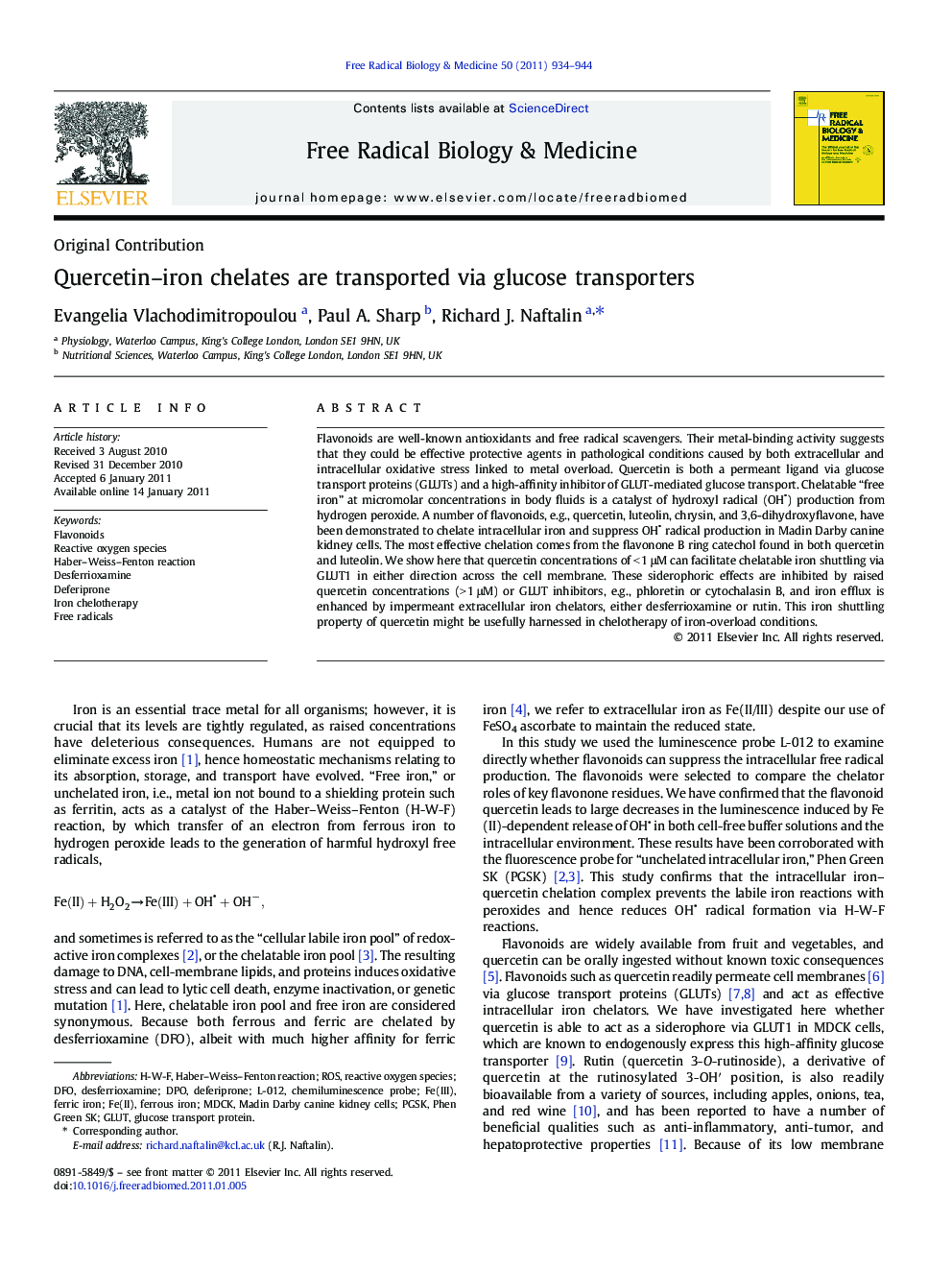| کد مقاله | کد نشریه | سال انتشار | مقاله انگلیسی | نسخه تمام متن |
|---|---|---|---|---|
| 1909488 | 1046727 | 2011 | 11 صفحه PDF | دانلود رایگان |

Flavonoids are well-known antioxidants and free radical scavengers. Their metal-binding activity suggests that they could be effective protective agents in pathological conditions caused by both extracellular and intracellular oxidative stress linked to metal overload. Quercetin is both a permeant ligand via glucose transport proteins (GLUTs) and a high-affinity inhibitor of GLUT-mediated glucose transport. Chelatable “free iron” at micromolar concentrations in body fluids is a catalyst of hydroxyl radical (OH
• ) production from hydrogen peroxide. A number of flavonoids, e.g., quercetin, luteolin, chrysin, and 3,6-dihydroxyflavone, have been demonstrated to chelate intracellular iron and suppress OH
• radical production in Madin Darby canine kidney cells. The most effective chelation comes from the flavonone B ring catechol found in both quercetin and luteolin. We show here that quercetin concentrations of < 1 μM can facilitate chelatable iron shuttling via GLUT1 in either direction across the cell membrane. These siderophoric effects are inhibited by raised quercetin concentrations (> 1 μM) or GLUT inhibitors, e.g., phloretin or cytochalasin B, and iron efflux is enhanced by impermeant extracellular iron chelators, either desferrioxamine or rutin. This iron shuttling property of quercetin might be usefully harnessed in chelotherapy of iron-overload conditions.
Journal: Free Radical Biology and Medicine - Volume 50, Issue 8, 15 April 2011, Pages 934–944